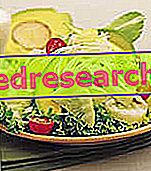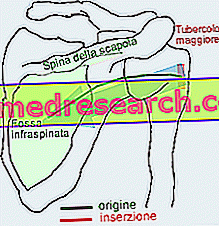Small lifestyle changes can prevent or significantly slow the progress of the metabolic syndrome.
To achieve this it is sufficient to associate a correct diet with a little movement that favors weight loss and maintaining a healthy weight.
What is the Metabolic Syndrome?

The metabolic syndrome is therefore a warning that invites us to regularize our habits (stress, nutrition and physical activity) before it is too late.
Precisely because those who suffer from metabolic syndrome most of the time are not yet sick, the dietary advice that is given reflects exactly those proposed to the general population. However, their application must be more careful and rigorous.
What to eat
If you think you are at risk of metabolic syndrome, it is a good idea to contact a doctor, both to evaluate this hypothesis and to receive personalized information on diet and exercise.
In all likelihood the specialist will advise to pay particular attention to the consumption of simple carbohydrates (primarily those contained in soft drinks, fruit juices and sweet snacks), sodium intake and the intake of animal and vegetable fats (margarine ). Caloric moderation is also very important, as overweight is the common thread that links most metabolic syndrome cases; consequently, reaching the right weight allows (in most cases) to balance the glycemic, blood pressure and lipid values.
At the same time the patient will be encouraged not to salt the food, to avoid sodium-rich foods and to eat more fruits and vegetables, controlling alcohol consumption.
Other useful tips for people with metabolic syndrome:
- distribute the nutrients evenly in the various meals avoiding those based only on carbohydrates (for example 100 grams of white pasta increase the blood sugar level more rapidly and faster than 100 grams of pasta with tuna and tomato and are also less satiating)
- Do not eat too many meals but divide your calorie intake into at least four to five daily meals; remember that in order to keep blood sugar under control not only the quality but also the quantity of nutrients taken with the diet is very important (it is logical to think a teaspoon of sugar, despite having a high glycemic index, causes an increase in blood glucose lower than 100 g of whole wheat pasta)
- Never combine two foods rich in carbohydrates in the same meal (lunch or dinner), so, for example, do not eat bread and pasta, bread and potatoes or rice and dessert at the same time. Instead, it is recommended to combine these foods with other fiber-rich foods such as vegetables.
- Learn to cook while saving fats and oils as much as possible, possibly adding them raw at the end of cooking.
- Reduce the consumption of salt (without excluding it completely from the diet), still prefer the iodized one and enhance the flavor of the food with spices, lemon or traditional / balsamic vinegar
Foods to Avoid or Moderate
RED TRAFFIC LIGHT: abstention or sporadic consumption
- Margarine with hydrogenated fats
- spirits
- Lard - pancetta - sausages - fat pork - fatty meats
- Fat cheeses
- Fatty sausages (salami - mortadella - coppa - offal)
- Fries
- Desserts, snacks
- Red of egg
- Sugary drinks
- Butter
- Tropical oils
ORANGE TRAFFIC LIGHT: moderate consumption
- Non-hydrogenated vegetable fats
- Semi-fat cheeses
- Semi-fat red meats
- Whole milk and yogurt
- Wine and beer
- Fresh pasta
- Cooked ham, speck
- Soffritti
- Dried fruit
- Shellfish, eel, eel
- Sugary fruit (figs, grapes and bananas) especially if ripe
- Fruit juices
YELLOW TRAFFIC LIGHT - do not abuse it
- Uncooked vegetable oils
- Lean meats
- Partially skimmed milk and or yogurt
- Lean cheeses
- Whole egg
- Raw ham, bresaola
- Lean pork
- Pasta or rice
- Potatoes
- Bread
- Egg white
- Totally skimmed milk and / or yogurt
- Fish (at least 3-4 times a week, shellfish and molluscs only once a week)
- Legumes with or without pasta (beans, peas, lentils, chickpeas, broad beans)
Recommended Foods
GREEN TRAFFIC LIGHT: TO BE CONSUMED FREE
- Seasonal vegetable soups (preferred: asparagus, beets, broccoli, artichokes, mushrooms, endive, spinach, savoy cabbage, pumpkin, courgettes)
- Non-sugary fresh fruit
- Vegetables in general
Example Diet for Metabolic Syndrome »



